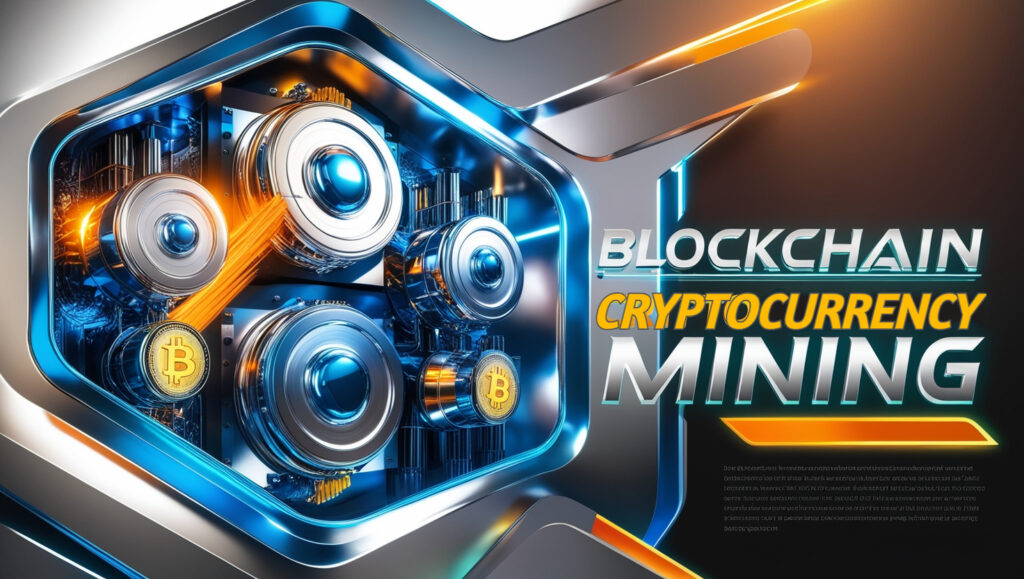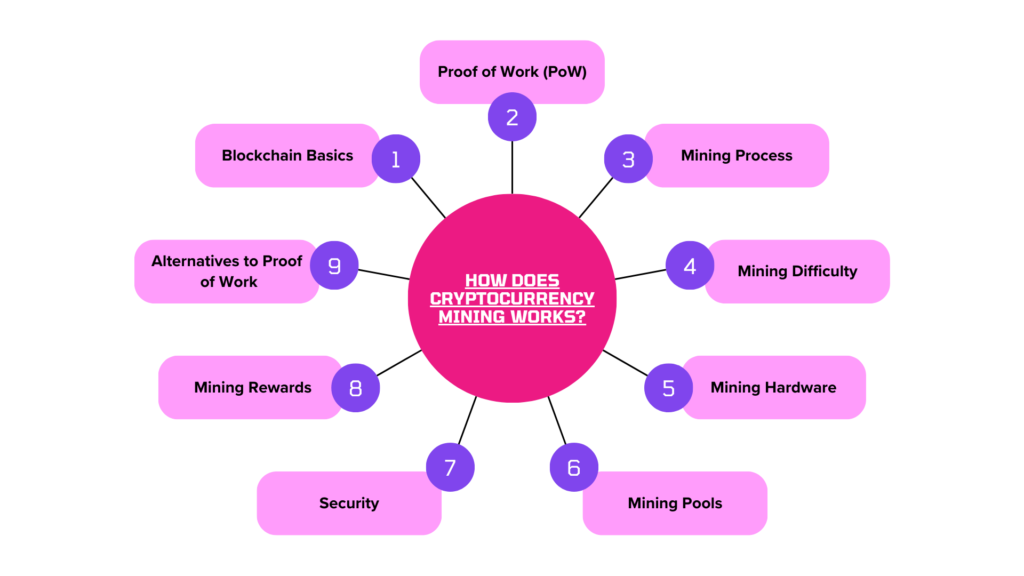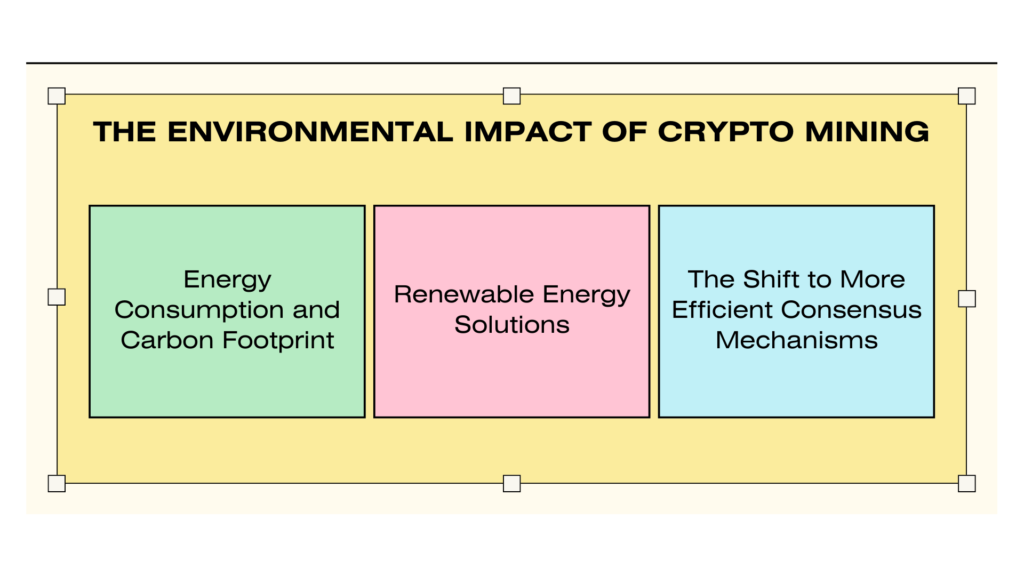Cryptocurrency has taken the world by storm over the last decade, revolutionizing finance and how we think about digital assets. Behind the scenes of this revolutionary technology, however, is an intricate and essential process called cryptocurrency mining. For those who are new to the world of crypto, mining can seem like a mysterious, complex task. This blog will demystify cryptocurrency mining, explain how you can get started with mining, and address the growing concerns regarding the environmental impact of these activities.

What is Cryptocurrency Mining?
Cryptocurrency mining is the process of validating transactions and securing the blockchain network. It involves solving complex cryptographic puzzles to ensure the integrity and security of transactions in the network. In return for this work, miners are rewarded with newly created cryptocurrency coins or tokens. While mining applies to many types of cryptocurrencies, one of the most famous and widely recognized is Bitcoin mining.
Cryptocurrency operates on a decentralized network, meaning there is no central authority, like a bank, that manages transactions. Instead, transactions are verified by individuals or groups of miners who maintain and update the blockchain — a digital ledger that records all cryptocurrency transactions. Each time a miner successfully solves a cryptographic puzzle, a new block of transactions is added to the blockchain, and the miner is rewarded with newly minted coins.
Bitcoin mining, in particular, plays a crucial role in maintaining the network’s security. By validating transactions and adding them to the blockchain, miners help ensure that Bitcoin remains decentralized, transparent, and trustworthy. The process of solving these cryptographic puzzles is known as “proof-of-work” (PoW), which is the underlying consensus mechanism for Bitcoin and many other cryptocurrencies.
How does Cryptocurrency mining works?
Cryptocurrency mining is the process through which new cryptocurrency coins or tokens are created, and transactions are verified and added to the blockchain. It involves solving complex mathematical puzzles using computational power. Here’s a breakdown of how it works:

1. Blockchain Basics
- Cryptocurrencies like Bitcoin, Ethereum, and others operate on a blockchain, which is a decentralized and distributed digital ledger. This ledger records all transactions made with the cryptocurrency.
- The blockchain is made up of “blocks,” each containing a list of transactions. These blocks are chained together, hence the name “blockchain.”
2. Proof of Work (PoW)
- Most cryptocurrencies (like Bitcoin) use Proof of Work (PoW) as their consensus mechanism. In PoW, miners use powerful computers to solve complex mathematical puzzles that validate and verify transactions before adding them to the blockchain.
- The puzzle is based on the cryptographic hash of the block’s data. Miners must find a value (called a nonce) that, when combined with the block’s data, results in a hash value that meets a specific condition (e.g., a certain number of leading zeros).
3. Mining Process
- Transaction Validation: Users send cryptocurrencies to each other, creating new transactions. These transactions are bundled together into a block.
- Solving the Puzzle: Miners try to solve the cryptographic puzzle. The process is random, and miners use their computational power to try different possible values (nonces) until they find the correct one.
- Block Addition: The first miner to solve the puzzle broadcasts their solution to the network. Other miners verify the solution, and once validated, the block is added to the blockchain.
- Reward: The successful miner receives a block reward (in Bitcoin, this is the newly created coins, plus transaction fees from the transactions within the block). For example, in Bitcoin, the reward is halved approximately every four years in an event called “halving.”
4. Mining Difficulty
- The difficulty of the mining puzzle adjusts regularly to ensure that new blocks are added to the blockchain at a consistent rate (e.g., Bitcoin aims for a new block every 10 minutes).
- If more miners join the network and computational power increases, the difficulty increases. If miners leave and computational power decreases, the difficulty decreases.
5. Mining Hardware
- CPU Mining: In the early days, it was possible to mine cryptocurrencies using regular computer processors (CPUs).
- GPU Mining: As mining became more competitive, miners started using Graphics Processing Units (GPUs), which are better at handling the complex calculations required for mining.
- ASIC Mining: For cryptocurrencies like Bitcoin, specialized hardware known as Application-Specific Integrated Circuits (ASICs) is now used. These machines are much more efficient than GPUs and CPUs for mining specific cryptocurrencies.
- Energy Consumption: Mining requires significant computational power, which in turn requires a lot of electricity. This has led to concerns over the environmental impact of mining, particularly for PoW cryptocurrencies.
6. Mining Pools
- Due to the high difficulty and competitive nature of mining, many miners join mining pools. In a pool, miners combine their computational power to solve the puzzle more efficiently. When the pool successfully mines a block, the rewards are distributed among the participants based on the computational power they contributed.
7. Security
- Mining plays a critical role in the security and decentralization of the cryptocurrency network. By requiring miners to solve puzzles and validate transactions, the blockchain becomes resistant to tampering and fraud.
- The energy and computational costs make it impractical for any single entity to take over the network and change transaction records, thus ensuring the integrity of the blockchain.
8. Mining Rewards
- The rewards given to miners typically include two components:
- Block Reward: Newly minted coins or tokens.
- Transaction Fees: Miners also collect the fees associated with the transactions included in the block.
- Over time, the block reward decreases, especially in PoW systems like Bitcoin. For instance, Bitcoin’s reward started at 50 BTC per block but has since halved multiple times, and as of 2024, it’s 6.25 BTC per block. This reduction in rewards leads to Bitcoin’s deflationary model, where the total supply of coins is capped at 21 million.
9. Alternatives to Proof of Work
- Not all cryptocurrencies use PoW. Some use alternatives like Proof of Stake (PoS), which requires participants to hold (stake) cryptocurrency instead of mining it through computational work. PoS consumes less energy and is often seen as more environmentally friendly.
How to Start Mining Cryptocurrencies?
Starting cryptocurrency mining might sound complicated, but it’s very much within the reach of anyone interested in entering the crypto space. Whether you’re interested in Bitcoin mining or exploring altcoins, here’s a step-by-step guide to getting started.
1. Choose Your Cryptocurrency
The first step in starting a mining operation is choosing which cryptocurrency you want to mine. While Bitcoin mining is the most well-known, there are thousands of other cryptocurrencies (altcoins) that can be mined. Some of the most popular mining cryptocurrencies besides Bitcoin include Ethereum, Litecoin, and Monero.
Keep in mind that the process for mining each cryptocurrency varies. For example, Ethereum uses the Ethash proof-of-work algorithm, whereas Bitcoin uses SHA-256. Research the specific requirements for mining the coin you want to mine to ensure you select the right equipment and software.
2. Select the Right Hardware
To mine cryptocurrency, you need the right hardware. The type of hardware you choose depends on the cryptocurrency you plan to mine.
- Bitcoin Mining Hardware (ASICs): Bitcoin mining, due to its high level of difficulty, requires specialized hardware called ASICs (Application-Specific Integrated Circuits). ASICs are machines built specifically to mine Bitcoin and other cryptocurrencies that use the SHA-256 hashing algorithm. These machines are expensive but offer high processing power and energy efficiency.
- Altcoin Mining Hardware (GPUs): For mining altcoins like Ethereum, you can use Graphics Processing Units (GPUs). These are more affordable than ASICs and can also be used for a variety of tasks, including gaming and graphics design. A mining rig typically consists of several GPUs working together to solve cryptographic puzzles.
- Cloud Mining: If you don’t want to invest in hardware, cloud mining offers an alternative. This is where you rent mining power from a third-party provider, which handles the mining for you. While cloud mining may seem like a hassle-free option, it’s essential to choose a reputable provider, as the space has been plagued by scams.
Bitcoin Mining Hardware = ASICs
Altcoin Mining Hardware = GPUs
3. Set Up a Mining Rig
Once you have the necessary hardware, you’ll need to set up your mining rig. If you’re using ASIC miners, the setup process is relatively straightforward since these machines come pre-configured for specific cryptocurrencies like Bitcoin.
For GPU-based rigs, however, you will need to assemble the components, including the GPUs, motherboard, power supply unit, and cooling system. Additionally, you’ll need to install mining software that is compatible with the cryptocurrency you’re mining. Examples of popular mining software include CGMiner, Claymore, and NiceHash.
4. Install Mining Software
Mining software is essential for managing your mining hardware and connecting to the network. Different cryptocurrencies require different software, so make sure you choose the right one for the coin you intend to mine.
For Bitcoin mining, most ASIC miners come with built-in software, but you might also use popular mining software like Bitmain Antminer or BTCMiner. For altcoins, software like Claymore’s Dual Miner (for Ethereum) or XMRig (for Monero) are common choices.
5. Join a Mining Pool or Mine Solo
Mining alone (solo mining) is becoming increasingly difficult, especially with Bitcoin. The computational power required to successfully mine Bitcoin solo is so high that most miners now join mining pools. A mining pool is a collective of miners who combine their computational power to increase the chances of solving the cryptographic puzzles and receiving rewards. The rewards are then distributed based on each miner’s contribution.
If you’re mining a less competitive cryptocurrency, you may want to mine solo. However, for many new miners, joining a mining pool is often the best option to ensure more frequent rewards.
6. Wallet and Payment Setup
To receive your mining rewards, you need a cryptocurrency wallet. This is where your coins will be sent once you’ve mined them. Choose a wallet that supports the cryptocurrency you are mining. For Bitcoin mining, you’ll need a Bitcoin wallet, while for Ethereum, you’ll need an Ethereum wallet.
Once your wallet is set up, you can link it to your mining software. Most mining pools will allow you to specify a wallet address where your mining rewards will be sent. It’s important to ensure your wallet is secure, as this is where your assets will be stored.
7. Start Mining
After completing the above steps, you’re ready to start mining. Keep in mind that cryptocurrency mining is a long-term commitment. While the rewards may not be instant, you can gradually see your profits accumulate as you contribute to the network.
The Environmental Impact of Crypto Mining
While cryptocurrency mining has been praised for its role in decentralizing financial systems, it has also been criticized for its significant environmental impact, particularly in terms of energy consumption.

1. Energy Consumption and Carbon Footprint
The primary environmental concern with cryptocurrency mining, especially Bitcoin mining, is the amount of energy required to perform the mining process. Bitcoin mining uses the proof-of-work (PoW) consensus mechanism, which requires miners to solve complex mathematical problems to add blocks to the blockchain. This process consumes a massive amount of electricity, with some estimates suggesting that Bitcoin’s energy usage is comparable to that of entire countries.
The environmental impact of mining depends largely on the source of the energy used. In regions where electricity is generated from fossil fuels like coal, the carbon footprint of cryptocurrency mining is significant. According to some studies, Bitcoin’s energy consumption generates a substantial amount of CO2 emissions, which contribute to global warming.
2. Renewable Energy Solutions
One potential solution to the environmental concerns surrounding cryptocurrency mining is the use of renewable energy. Several mining operations are now migrating to areas with access to abundant renewable energy sources, such as hydroelectric power, solar energy, and wind power. For example, countries like Iceland and Canada, with a surplus of renewable energy, have become popular locations for cryptocurrency mining farms.
In fact, a growing number of miners are turning to renewable energy sources to reduce the carbon footprint of their operations. By using solar power or hydropower, they can mitigate the environmental impact while continuing to mine cryptocurrencies.
3. The Shift to More Efficient Consensus Mechanisms
Another way the cryptocurrency industry is addressing environmental concerns is by shifting away from the energy-intensive proof-of-work (PoW) consensus mechanism. Some newer cryptocurrencies, including Ethereum, have adopted a proof-of-stake (PoS) model, which requires far less computational power and energy. PoS works by selecting validators based on the number of coins they hold, making the process more energy-efficient.
Ethereum’s transition from PoW to PoS in 2022 (known as “The Merge“) was a landmark event in the crypto space, and it is likely that more cryptocurrencies will follow suit, which could significantly reduce the environmental impact of mining in the future.
Conclusion
Cryptocurrency mining plays a fundamental role in the blockchain ecosystem, ensuring the integrity and security of decentralized networks like Bitcoin. While starting cryptocurrency mining requires an initial investment in hardware, mining software, and setup, it can be a rewarding endeavor for those looking to earn digital currencies.
As cryptocurrency mining continues to evolve, both in terms of technology and environmental responsibility, it remains an exciting and potentially lucrative sector. If you’re considering joining the mining world, make sure to stay informed about the ongoing developments and challenges that shape this fast-moving industry.
0 Comments